It’s 6:30 pm around dinner time and like most families you tune into world news. Evening to evening you see a variety of different things ranging from earthquakes in Ecuador, to poverty in Los Angeles. However, the unfortunate reoccurring subject that is becoming a household name, shocking the world almost daily, and making headlines more often then they should; is the terror group ISIS.
In light of the various attacks in Brussels, Turkey, United States, Paris and all across the world; it is clear that the battle against this inhumane group is nothing but urgent and to put a stop to this madness is going to take a collaborative effort from the White House and nations all around the world. Secretary of State, John Kerry is quoted saying from London England that, “ We all understand, that Daesh, as it is commonly known in the Arab world, is not simply a Syrian problem, not an Iraqi problem, Daesh is a global problem and it demands a coordinated comprehensive and enduring global response.”
Who even are these people and why is this fight so urgent? “ISIS”: short for Islamic State of Iraq and Greater Syria, once started as small portion of Al Qaeda. Today their strength surpasses Al Qaeda by great measures and the terror group is implementing Sharia Law, which is rooted in eighth century Islam to establish a society that mirrors the region’s ancient past. ISIS is Currently collecting taxes and delivering government services while slaughtering prisoners and demanding ransom from many. ISIS now controls its largest city of Mosul, that was taken by them in last June and is said to be bigger then the United Kingdom (I know, scary thought right), and they has a central goal to sow civil unrest in Syria and Iraq with the intent of establishing a single, transnational state based on Islamic law and ultimately to keep the West out of the Middle East.
It is evident that this threat is crucial and poses great danger for the future. The Islamic State has claimed responsibilities for a numerous amount of murders and terror plots.
Much of this horror started about two summers ago when American journalist James Foley was abducted and beheaded on a video that was posted to YouTube, this was also the first time ISIS faced the media headfirst. Following that came a gunman holding a Sydney café hostage, the Charlie Hebdo attack in Paris, Tunisia museum shooting, Yemen Mosque bombing, Cairo embassy shooting, French train attack, San Bernindino shooting, Brussels attack, among many other instances. Loosing lives of loved ones to this group is no means justifiable and we as a human beings need to come together to stand against this.
In the most recent attack in Brussels Belgium, the fighters targeted the Brussels Zaventen airport and a metro station in the city due to Belgium’s “participating in the coalition against the Islamic state.” This most recent attack is one amongst many that clearly proves the intensity in this fight, and the fact that it moves far beyond the grounds of the Middle East.
ISIS has key strategies that allows them to advance far beyond their homeland, revolutionize terrorism and do something that sets them apart from many terror groups of the past. Currently ISIS is recruiting from the internet and using major websites such as Twitter and YouTube to gain influence and spread their message. However, ISIS is not just targeting Muslims who already live on their side of the world. The New York Times reported last month that foreigners make up half of ISIS fighting force, and a total of 4,000 come from the West. ISIS is also known for using the internet to post propaganda videos where fighters clearly speak Western languages, in order to encourage Westerners to come fight in the East.
On a good note, The United States has taken measures into their own hands by sending over many airstrikes to the Middle East. Are air strikes enough though? The US has been sending the most amounts of air strikes, in front of France, then Russia and Australia. Many critics argue that today airstrikes are in no way sufficient to defeat ISIS; Republicans believe that ground troops should be sent to fight the battle.
Obama has been long criticized for being to lenient on his stance on behalf of ISIS. However in mid December in one of his speeches Mr. president was quoted saying, “ISIL leaders cannot hide, and our message is simple: You are next.” With this being said, the public also seems to think that airstrikes are not enough, and a lot of people are not so pleased with Mr. President’s performance in the fight.
Four days Prior to the Paris attacks a poll was taken to measure the Americans take on the way Barack was handling the situation and a total of 64% disapproved on the way things were going.
Evidently, ISIS has not just had an effect on one region; they have affected the US, France, Belgium, Russia, Tunisia and many other parts of the world. With that being said it is not just a one nation fight and the United States cannot take on the entirety of this battle. The fight is too big, and we cannot get into another war alone, this is a conflict that affects nations all across the world. Power in numbers is exactly what we need to put an end to this group.
As of January, the United States, France, Germany, Britain, Italy, Australia, and the Netherlands had a collective meeting hosted by the United States’ Defense secretary Ashton Carter. In the meeting they all agreed they must do more to put an end to this mess, the group mentioned in a combined announcement that it has “expressed our broad support for the campaign plan objectives, and the need to continue gathering momentum in our campaign.” Carter also announced that there are 26 nations in the anti- ISIS coalition including Iraq, the US has mapped out an organized plan against ISIS over the next year.
Over the past few years ISIS has been able to gain control over two major cities in Syria and Iraq; these cities allow for ISIS to advance and only terrorize more. Luckily, A primary goal of the coalition is to assist Iraqi and Kurdish forces to regain control of Mosul in Northern Iraq and to help the Syrian forces in overthrowing ISIS from their self proclaimed capitol of Raqq, Syria.
The United States has also mentioned that they would be pleased to see more straightforward military contributions, with equipment and training on behalf of the Arab and Asian countries.
It is a peace of mind to know that other places around the world have also taken strides in the effort to slow down ISIS. Canada has sent about seventy troops to serve as advisors to the Iraqi security forces, Germany has also sent troops to help Kurdish forces. Italy has provided monetary support, sending 2.5 million dollars in weaponry and offered assistance in the refueling of planes for airstrikes.
The ISIS fight is seemingly so president that it is a major debate among presidential election today. Each candidate has very strong and differing views, yet the candidate we as a nation choose to be in office will have a major impact on how we defeat this group of evil. Republican candidates Kasich and Trump, although are on the same “side”, they also view the topic very differently.
Kasich wants to put in place a worldwide coalition, including NATO countries along with other Middle East nations, to become involved in fighting ISIS. While Donald has more of a “kill ‘em all” type view, and wants to ultimately bomb everything. However, on the Democratic side, Bernie and Hilary think a little differently. Bernie has said he would also like to build a collation, and would even be willing to work with Russia and Iran to defeat the extremist groups. Hillary on the other hand want to implement more allies planes and strikes.
Regardless of the differences between these candidates, what is most important is that we need to make a collaboration of nations all across world and realize that this fight is nothing short of urgent.
From what has been happening all across the world it is apparent that this fight is extremely important to protect our people, and that this issue is extremely president, innocent people cannot not be loosing their lives to this group anymore. We as the human race need to work together globally to put a stop to this injustice and to prevent future occurrences. No single country is only affected by these tragedies and that is why we need to face this head on collaboratively.
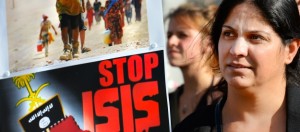
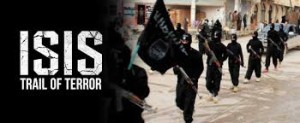
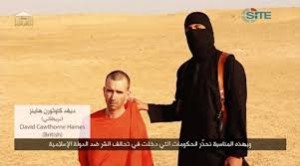
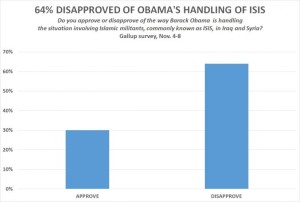
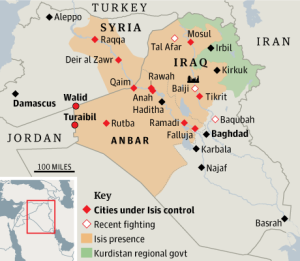
[1] How well does the title provocatively focus the reader’s attention, as well as the lede? Is it thoughtful, creative, clever? Does it lead the reader into the text and provide some insight into the issue?
The title of my article reads, The Fight is Urgent and the Collaboration Is Crucial. Undoubtedly is this title clever while grabbing the readers’ attention, I would think that for most readers when they read the title, they would want to know what fight is this article referring to and how is a collaboration crucial with a fight? The title has a little bit of an inconspicuous way, and also incorporates strong words such as “crucial” and “urgent”. By incorporating these words a strong and deeper message is sent on behalf of the article, letting readers know that this is a serious topic. Once you start reading, the lede also grabs the readers attention even more. The lede states, “It’s 6:30 pm around dinnertime and like most families you tune into world news. Evening to evening you see a multitude of different things ranging from earthquakes in Ecuador, to poverty in Los Angeles.” This allows the article to connect to the audience from the gecko, (in most cases the people who watch the world news also read The New York Tines) and a sentence later tells you what article as a whole is going to be about. It provides insight into the issue by saying that ISIS has been grabbing the headlines, and makes it clear that this an urgent topic (connecting back to the title).
[2] How well does the introductory section of the article invite the reader into the paper, as well as offer up exigency? How does it locate a problem or controversy within a context that provides background and rationale?
As briefly stated above, the introductory paragraph invites the reader by connecting with them on behalf of the world news and introduces the importance of this topic by stating, “However the unfortunate reoccurring subject that is becoming a household name, shocking the world almost daily, and making headlines more often then they should; is the terror group ISIS.” The next paragraph continues to locate the problem and provide background and rationale by talking about the past events in Brussels, Turkey, US, and Paris, by providing specific examples like I did it, sheds light on how this article is referring to a serious problem. The paragraph goes on to provide rationale by quoting secretary of state John Kerry when he says, “ We all understand, that Daesh, as it is commonly known in the Arab world, is not simply a Syrian problem, not an Iraqi problem, Daesh is a global problem and it demands a coordinated comprehensive and enduring global response.” By quoting John Kerry and bringing up recent past events it displays a good amount of background and provides very credible information towards rationale aspect of my article.
[3] How well does the writer offer up a strong ‘idea’ that requires analysis to support and evolve it, as well as offers some point about the significance of evidence that would not have been immediately obvious to readers.?
Throughout my article I offer a strong idea that requires much support and evolution, as well as points about the significance of evidence that would not have been so obvious to readers. The evolution of my article is clear, I start out by leading the reader into my article, talking about world news and connecting a grander audience, and bring everyone’s attention to the recent events have occurred on behalf of my topic. I then go on to talk about whom exactly is this group that is causing all of these tumultuous occurrences. This way of introducing is very strong because it allows the readers to connect on various levels. In the first paragraph the audience connects with the world news, then they are invited to understand by brining up the recent attacks and addressing who these people are. Following this is really when my article evolves I go on to explain how the threat of this group is so crucial and why. I offer significant evidence that would not be so obvious in the beginning towards the middle and end when I refer to the collaboration that needs to occur in order to fight this evil. I provide the readers with clear and concise evidence of who is exactly doing what in regards to air strikes and how other countries across the world are going to be involved and collaborate to help fight this horrible fight. Conclusively, towards the end and was in no way obvious towards the readers was how I bring up how the president is currently handling things and how the next presidential election is greatly going to affect how we fight this urgent fight.
[4] How well does the writer show clarity of thought; uniqueness of presentation; evidence of style; and historicized topics?
I show clarity of thought, uniqueness of presentation, evidence of style and historicized topics throughout my article. Clarity of thought and uniqueness of presentation go hand in hand and I ultimately display this through my organization of my article. I start off by inviting the reader in, trying to connect with them, through the sharing of world news. I then slowly start to introduce the topic of ISIS by talking about recent events that most everyone has heard of, and go on to explain who exactly these people are and what are their exact motives. Later in the article, once my topic is fully introduced to give the reader a strong understanding I start to explain more complex topics within. For example, I speak about the collaboration of nations all across the world to fight this group and who exactly is doing what. However, as a whole my piece is undoubtedly historicized, from the beginning to the end. Unfortunately, the events that I speak about in regards to ISIS are historicized for the wrong reasons. ISIS is making history like none other, and I write about how they are doing it in different way then most terror groups and using the internet and media outlets to get their message across the world and recruit fighters from everywhere. My article is also historicized when I talk about how Obama is handling things today, things such as sending the most airstrikes to the Middle East; and even further historicized when I talk in regards to the upcoming elections, history is going to be made with how the next president handles this situation aswell.
[5] How well does the writer recognize that a NYTs Magazine audience will challenge ideas that are overgeneralized or underdeveloped or poorly explained? (that is, did the writer avoid cliché and vagueness or address points/issues readers are likely to have?) How well did the writer decide about how to develop, sequence, and organize material?
I recognized that the audience I will be writing towards will challenge the ideas that are overgeneralized in many different ways. I do this when I pose the question saying, “are airstrikes enough?” I also do this when I bring in many different views on behalf of the presidential candidates. I think that that I did a very good job of organizing and putting my article in sequential order. In the begging I introduce the topic and explain who ISIS is, towards the middle, I describe their motives, followed by examples of what they do and how we can solve these problems and explain why the collaboration is so crucial and the intensity of this fight. I finish with the upcoming presidential election because that is looking further into this problem and will have an affect on how we treat this issue in the upcoming years.
[6] How well does the writer research a controversy, develop a persuasive stance, utilize research about the topic, and join the ‘debate’ by making an argument of importance?
It is evident that I research a controversy just in my title the title of my article The Fight is Urgent and the Collaboration Is Crucial. Through out my article I develop a strong and persuasive stance in regards to the importance and “urgency” of this issue and how “crucial” it is to “collaborate” with other nations across the world. It seen in many aspects of my article, for example, in the middle, “ISIS has not just had an effect on one region; they have affected the US, France, Belgium, Russia, Tunisia and many other parts of the world … The fight is too big, and we cannot get into another war alone, this is a conflict that affects nations all across the world. Power in numbers is exactly what we need to put an end to this group.” I later utilize research when I discuss what the United States and nations all across the world are doing right now on behalf of air strikes. I state, “On a good note, The United States has taken measures into their own hands by sending over many airstrikes to the Middle East … The US has been sending the most amounts of air strikes, in front of France, then Russia and Australia.” In respect to the airstrikes, examples of ISIS terror, presidential standpoints, and view points across the world, it is clear that I make this an argument of importance.
[7] How well does the writer meet or exceed research expectations of assignment requirements (6 appropriate secondary sources, 1 visual source, (or more) and primary research? ).
In my article I do a great job of exceeding research expectations. I took many of my information and facts from various different sites. I use information from various different news cites, proquest, and information from my TED talk. In regards to visuals, I provided the audience with a total of five very fitting images. These images only enhance the article by matching up to the specific information I write about.
[8] How well does the writer integrate secondary and primary sources (that support and complicate the topic) effectively into the text, introducing and contextualizing them, and “conversing” (i.e. no drop-quoting) in ways that deepen and complicate the analysis?
Throughout my article I felt I integrated the research very well. I present the research as more factual base and made the article seem more of a conversation with a tone that made it a little more exciting. I do this from the start to finish of my article, the tone starts out with a conversational type feel when I discuss the world news, and it furthers in the middle, when I ask , “are airstrikes enough?”. I conclude the article with the same thing, and make it as though I am speaking to an audience, “From what has been happening all across the world it is apparent that this fight is extremely important to protect our people, and that this issue is extremely president, innocent people cannot not be loosing their lives to this group anymore…”I believe that I integrate my research effectively in ways that deepen the analysis throughout my article, most all of it is research and factual based. I am informing my audience about the topic in a sophisticated factual manner. This is clear in the beginning when I address who exactly is ISIS, I then go on to discuss airstrikes and provide my audience with factual based info about who is sending the most over- and it continues from then on, with the percentage of people who approve and disapprove of Obama and much more throughout.
[9 How well does the writer persuade an audience to consider claims made from a particular position of authority on which you have built your research? How strong and effective is the writer’s use of rhetorical tools (ethos, logos, pathos)?
It is evident that I persuade my audience and consider claims from a particular position. In my article I am encouraging the reader that the collaboration is crucial and the fight is urgent- from the title in the beginning to the last piece of the whole article, the picture that says “STOP ISIS”. Ethos is— how an author builds their own credibility, trustworthiness, or authority on a subject, while logos, is the reasoning and argument that the writer uses to persuade an audience. Lastly, Pathos is how an author attempts to engage or move audiences’ emotions. In my article, I show all of these things. I display ethos when I display my creditability backing up my information with factual evidence, such as bar graphs, and much more. Logos is seen when I am persuading the audience that this fight is urgent and the collaboration is crucial. I persuade the audience in many different ways, not only through my writing but also with images of the beheading and a map to show how much ISIS currently has control of. Finally, Pathos is also something that is seen through the visuals that I provide I move the audiences’ emotions by showing the picture of the Jihadi John beading the man on camera.
[10] How well does the writer select appropriate, interesting, revealing visual? Has the writer placed a visual strategically in the essay and provided relevant commentary on and/or analysis of them? Do the visuals contribute to the essay in meaningful ways (i.e. would the essay be affected if the writer took the visual away)?
In my article I input a total of five images, in a specific placement manner. The first visual is a directly under the title, before the article starts, in an elongated rectangular shape. The rectangular visual on the left side states “ISIS trail of terror in all black” and on the right, fades into ISIS members marching in all black with guns. I choose this picture because I thought that it sent a good a message from the beginning. It indicates that ISIS is a trail of terror, and the rectangle shape allows for organization and simplicity, while still getting the point across. The second image I choose is later down and correlates with my Jihadi John commentary, the image consists the ISIS main “Jihadi John” about ready to behead an innocent man. In the article the image is under the paragraph where I explain the incident of the beheading. I specifically state, “Much of this horror started about two summers ago when American journalist James Foley was abducted and beheaded on a video that was posted to YouTube, this was also the first time ISIS faced the media headfirst.” I thought it was relevant after the commentary, so it instills a sense of surprise and understanding about the incident. The next picture is in a graph displaying the amount of American People who are unhappy with Obamas performance with ISIS. Above the picture I state, “Four days Prior to the Paris attacks a poll was taken to measure the Americans take on the way Barack was handling the situation and a total of 64% disapproved on the way things were going.” Included is an appropriate hyperlink to the website where the numbers and graph are given. Following the bar graph, a few paragraphs down in place is a map. I decided to put a map in this area because above it I was discussing where ISIS has current control. The map is a good reiteration of this, and it gets the point across that ISIS is a serious matter and not just a small terror group. I conclude with my last picture after all the wording in my article, this is a picture of what looks like Syrian people, and one women in specific looking up to the sky in despair, the picture also reads “STOP ISIS”. I felt this was a good way to end because it sends a heartfelt message of what needs to be done, and in the look of the women’s face, it proves how so many are suffering. If I took the images away, the article as a whole would not be as strong, the map, bar graph, and the beheading video in specific reiterate direct facts that I address, and the other pictures send a strong message on behalf of ISIS as whole and prove how crucial the fight and collaboration is.
[11] How well does the writer show development of final article using various drafts, in-class peer editing and workshops, and/or teacher comments?
Looking back on my various drafts my article evolved greatly from the beginning to the end. The activity we did in class where we wrote our claim on the piece of paper really changed my idea as a whole. In the beginning I was going to write an article about how Obama himself is not doing a sufficient job on the ISIS problem. After doing that specific activity some people brought to my attention that it might be better to address this issue as a worldwide problem collaboratively and collectively, seeing as it affects nations all across the world. From then on my whole article converted from taking a one-side stance to looking at the issue as a world wide problem. Not only did my actual topic change from draft to draft but I was also able to perfect my grammar and sophistication. A second activity that tremendously affected my article, was when as a class we looked at the example NYT article about ** LOOK UP. This helped me gain a solid understanding of a New York Times article, and was able to realize that pictures should be included, a strong lede and a sort of tone that is unlike an essay.
[12] How well does the writer use hyperlinks—are they effective/appropriate?
In my article I have a total of four hyperlinks that are used very appropriately. The first one is when I am talking about ISIS’s bombing in Belgium, and where exactly was it targeted. The hyperlink in green states, ““participating the coalition in against the Islamic state.”” When my audience clicks on the article, it leads you to a page where it speaks about the Brussels Bombing and what I was mentioning in the midst of the hyperlink. The second hyperlink is placed a little farther down when I am talking about Obamas stance, and how he has been critized with what he has said. The hyperlink states, “Mr. president was quoted saying”, when you click on the hyperlink it directly brings you to a website where Obama’s direct quote is, and further explained what he has said. The third hyperlink is close to the second one and states, “total of 64% disapproved”, this one is in place where a percentage is being talked about. The hyperlink directs you to the exact page where the percentage is said, and proves that 64 percent disapproved. The final hyperlink is placed more towards the end of my article, the link is a little below where I am talking about coming together and having a meeting that is hosted by the defense secretary Ashton Carter. The hyperlink states, “United States’ Defense secretary Ashton Carter.” and brings you to a video where it displays how important the fight against this horror group is. Overall, the hyperlinks I posted were clearly effective and make the article more sophistacted.
[13] How well did the writer edit for grammar, style, and usage effectively? Does the writer’s attention to sentence level issues help him/her establish authority or credibility on the issue?
Conclusively, the writer has very precise grammar and style throughout. It is clear that the styles of the paragraphs were broken up with a lot of thought, so it doesn’t have an essay like feel. The grammar and the wording is also very well written, in the article many important names are mentioned and capitals are never missed. The writers attention to sentence level issues helps her establish credibility. For example, when the writer says a fact or statements she often backs it up and provides more evidence after. This is displayed in all of my article, however, in particular when I speak about Obama’s criticism for how has been handling this issue. In specific I say, “Obama has been long criticized for being to lenient on his stance on behalf of ISIS. However in mid December in one of his speeches Mr. president was quoted saying, “ISIL leaders cannot hide, and our message is simple: You are next.” With this being said, the public also seems to think that airstrikes are not enough, and a lot of people are not so pleased with Mr. President’s performance in the fight. Four days Prior to the Paris attacks a poll was taken to measure the Americans take on the way Barack was handling the situation and a total of 64% disapproved on the way things were going.” In the beginning of the statement I talk about the disapproval and later back it up with direct facts.